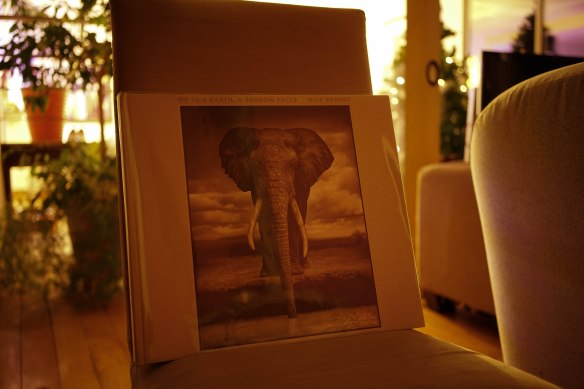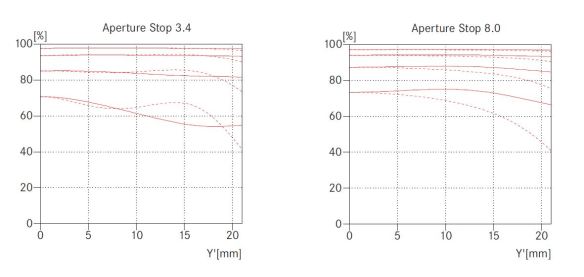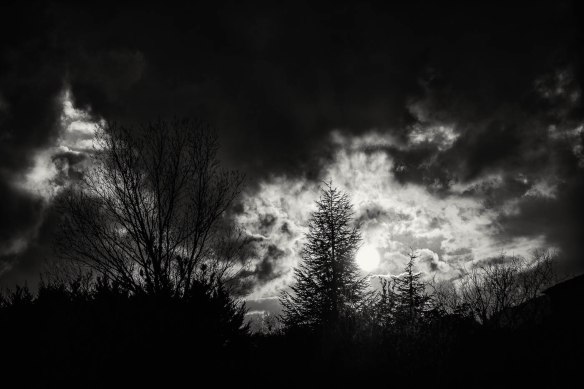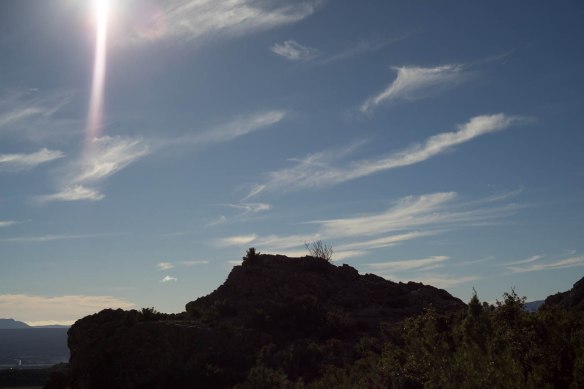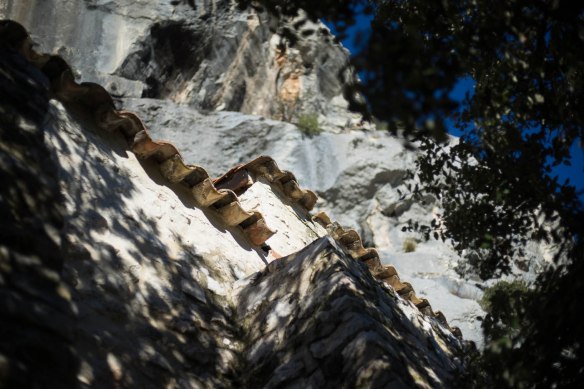So there we are, admiring the city of Paris from above on a cold and wet wet wet autumn morning to give the Zeiss Loxia 50mm f/2 a second look (Philippe’s world first public review is here) and compare it to its natural rivals : the Sony / Zeiss FE 55mm f/1.8 Sonnar T* and the Leica Summicron 50mm f/2 (in its latest design). I reviewed the former here and declared my love for the Summicron on multiple occasions, most notably here.
![DSC06877]()
We’re up at sparrow to catch the rising sun shine its glory on the alabaster-white walls of the Sacré-Coeur Basilica in Montmartre and infuse its golden goodness into the glass towers, medieval streets, leafy parks and river bends that make this proud capital one of the most desirable places to photograph on the globe.
And, as you can tell from this first image, it ain’t really happening.
But worry not. Over the course of an exhausting, 12 miles and 300 frames day putting the final touches to the upcoming InSight: Paris guide, we face a wide variety of weather / lighting conditions ranging from belting rain to glorious sunlight to open shadow.
OK, this is a long review. Onwards!
Build & Ergonomics
There’s little point in rephrasing Philippe’s original words. Let me just say that the auto-zooming as you rotate the focus ring combined with focus peaking make this the easiest lens to focus I have ever used. On static or slow-moving targets, I find this far preferable to any AF available today.
The Zeiss-blue bottom ring adjacent to the A7r’s orange mount makes a strong case for colour-blindness.
Build is classy and modern, the focus ring is positive and well damped with absolutely zero play or backlash.
![DSC06939]()
Though Zeiss make no claims for water-resistance, the lens’s first day in my keep was veeeery rainy and it seemed to fare much better under the conditions than the poor A7r, whose rear screen activation was the first to go awol (ditto on Philippe’s A7r), soon followed by the selector wheel and worrying battery drainage.
In a 3 way battle with it’s previously mentioned competitors, the Loxia 50 ranks second for sunshade design, behind the sheer retractable brilliance of the Summicron 50 but neatly ahead of the FE’s more cumbersome and less sexy design.
And I’d stick to this order of merit in terms of build and feel.
But the focusing yumminess of the Loxia, it’s adapter-free nature and Exif data make it the global winner for me. An aperture ring in 1/3 stops is also smile-inducing.
The Loxia 50 wins this round.
Colour
We were all led to believe Steve McCurry is a genius, but the reality is he simply had a Loxia before the others ![;)]()
Unless otherwise noted, all the pictures on this page are straight out of camera except for auto white balance in LightRoom (in camera AWB is a joke on the A7r). And, as you can see, colours are bold yet realistic.
![DSC06893]()
![DSC06980]()
![DSC06926]()
Even in a scene where natural colours are less berzonkers and more subdued, the Loxia 50/2 transfers hues cleanly and truthfully.
![DSC06974]()
![DSC06972]()
A telling sign of how well this lens performs is that I have not yet resorted to my usual “willful” post processing. I will, obviously, because that’s the look that appeals to me. But I have been so amazed by the out-of-the-box colours of my 300+ images so far that I’ve just corrected white balance to let colours sing naturally.
Skin tones
After Philippe’s world-first review was published we were asked to evaluate how well the Loxia deals with skin tones.
Sadly for us all, the foul weather conditions meant that tourists of all climes were indeed present but few were showing any skin at all. However, let it not be said DearSusan gives up easily. We rang a model agency (or maybe, we were just lucky …) and soon had 4 pretty ladies walking up and down the Ponts des Arts.
![DSC07050]()
What do you think ? Below is a photo of hair, which is just as important as skin rendition for portraits. Click for a full-size file showing tremendous detail and lifelike rendering.
![DSC07054]()
![DSC07043]()
![DSC07070]()
As before, the first word that comes to my mind is natural. Colours are strong (see green bottle and red label above) but also very realistic (the rest of the scene above, and the scene below, with the sun finally out).
![DSC07073]()
To use the adequate ISO9001 colour measurement terminology, I’d rank the Loxia 50/2’s colour rendition as : bloody marvelous. Reds, blues, greens, faded colours, strong colours, you name it. The separation between close hues is clean and full of subtlety. And the lens shows great transparency and clarity. This could be expected of the lens’s design, and also of the reviews of its ancestor, the Zeiss ZM Planar 50/2.
Another strong point is the absence of colour shift as you change the aperture. As you can read in my Leica Summicron-R 50 review, even the best lenses can be afflicted by this. But I didn’t notice the problem at any point with the Loxia 50/2.
Micro contrast is not very high, though, so rendition appears smooth and transparent but natural and never aggressive. As you can see below, this translates well into B&W.
![DSC07051-Modifier]()
![DSC07055]()
![DSC07055-Modifier]()
![DSC07090-Modifier]()
![DSC07093-Modifier]()
All in all, I think the general aesthetics of this lens are slightly out-of-time. Something in the way it draws is classic, but the absence of vignetting, great purity and transparency feel very modern. It’s a great lens for reportage or traveling, transmitting exotic photons with a neutrality that is welcome when there is no chance to retake a picture.
So, the Loxia 50/2’s handling of colour and tone shines in isolation, but you can see how it fares compared to 2 adversaries mentioned in the title, below. Differences are subtle, but they are there.
In the field, showdown time
“All very well”, you murmur, “but how it stacks up against the competition is what we want to know” …
My thanks go to Philippe, who is selling his FE 55 (leave a comment to grab it now, I’ll keep it private), for holding on to it long enough for this side-by-side comparison to take place.
We set up our tripods on the lovely Pont des Arts for aperture series close up and at infinity. Boredom alert …
Close up comparison
|
Zeiss Loxia 50 |
Zeiss/Sony FE55 |
| f/2 |
![f/2]() |
![f/8]() |
| f/4 |
![f/4]() |
![f/8]() |
| f/8 |
![f/8]() |
![f/8]() |
| f/16 |
![f/8]() |
|
The main difference I’m seeing at f/2 is seemingly identical detail in both lenses, but higher accuance in the FE55. And a hint of veil in the out of focus zones on the Loxia 50/2.
At f/4, my verdict would be reversed, with a tiny advantage to the Loxa 50/2 over the FE55.
At f/8, I think the Loxia maintains or increases its advantage.
In terms of sharpness, there’s actually very little in it. Given that the FE55’s MTF curves rank among the best the human race has ever created and the Loxia’s border on the oh-hum at all apertures in comparison, it’s probably fair to say that Sony hires separate designers for the lenses and their brochures ![;)]() At any rate, the Loxia holds its ground well in this, lofty, baby OTUS company (please note that, at the moment of writing, Lightroom has no profile for the Loxia. We may see even better result from the lens in the near future).
At any rate, the Loxia holds its ground well in this, lofty, baby OTUS company (please note that, at the moment of writing, Lightroom has no profile for the Loxia. We may see even better result from the lens in the near future).
Infinity comparison
|
Zeiss Loxia 50 |
Zeiss/Sony FE55 |
Summicron-R 50 |
| f/2 |
![f/2]() |
![f/8]() |
![f/8]() |
| f/4 |
![f/4]() |
![f/8]() |
![f/8]() |
| f/8 |
![f/8]() |
![f/8]() |
![f/8]() |
Again, there’s so little in it that most differences are hidden in the ugly jpeg compression (files look a lot nicer at 100% in LightRoom). But forced to make a choice, I would say the following :
At f/2, my winner is the Summicron in the center, then the Loxia (very marginally), then the FE55. In the right edge (buildings on the right of the bridge), the same order applies, with a greater edge for the Summicron, in spite of an obvious veil. The cleanest, and best, image probably comes from the Loxia.
At f/4, I’ll put the FE55 in front of the other 2, tied, in the center zone. On the right-edge buildings, the Summicron seems to have the most detail, followed by the FE55, then the Loxia 55. But the Loxia 50 and the FE55 give the cleaner image. The FE55 wins this one.
At f/8, detail level seems identical, but the Loxia and FE55 give the most pleasing image.
My conclusion is that sharpness is really not what you should go by to separate these lenses as all 3 perform on a very similar level. Ergonomics, AF and rendering are much more important here.
Strangely enough, it appears the A7r exposes much better with the Loxia than with the others, particularly the Summicron, with which underexposure seems to be a given (Summicron 50 frames were given a +0.4 exposure boost here and still look underexposed). Based on these examples, I’d have a hard time choosing between the Zeiss Loxia 50 and Zeiss/Sony FE55.
Focus : shift, breathing and plane
The following day, looking for focusing oddities, I took pictures of a straight lines on the streets by the port of Marseilles and found no trace of curved focus “plane” or of focus shift. Both are good news, and the latter particularly welcome in a manual focus lens. To confirm this informally, I focused (using focus peaking) on a range of targets and checked that focus peaking stayed in place while I changed the aperture. It did.
On the other hand, the Loxia 50/2 seems to exhibit some focus breathing. Not being a videographer, I’ve no idea how severe that is compared to other lenses, but download the two images below and switch rapidly from one to the other and you’ll see that focal length appears longer at close focus than at longer distances.
![DSC07180]()
![DSC07181]()
Flare, no glare
As previously described by Philippe, the lens can be made to flare.
So far, I’ve never found flare to to be an inconvenience, but the photographs below are proof of its existence. Nothing overly objectionable in most situations, but flare actually becomes more visible (concentrated in a smaller area) at small apertures. First image at f/5.6, second at f/2. Caveat photor.
![DSC07134]()
![DSC07135]()
Glare, on the other hand is almost totally absent. The photograph below demonstrates the very high global contrast that can be dealt with. This is at f/4, the aperture which I consider the best balance between technical excellence and “organic” drawing (more below, on this). Click the image for a full-size image and see how sharp and clean the lens is at this aperture.
![DSC07142]()
Bokeh & that Zeiss 3D pop
Far from being a bokeh-king, the Loxia 50/2 uses out of focus areas more to articulate planes in a very natural fashion rather than to bathe us in creamy custard. In most situations encountered so far, it’s pretty classy and elegant. I lack the patience and lab-rat inclination to run more aperture series for bokeh, but here are a few examples at various apertures. UPDATE: I was asked for Bokeh samples at f/2.2 to f/2.8 in various scenarios. You can find them here Loxia 50/2. Bokeh Series.
In distinct near-far relationships, the 3D rendering is really very good (next 5 images at f/2).
![DSC07129]()
![DSC07122]()
![DSC07214]()
![DSC07158]()
![DSC07159]()
You can click the final image for a full-size image that will give you an indication of far-edge sharpness at close range, f/2 in a dark area (focus is on the eye at the bottom). Not bad!
In more “continuous depth” settings, the progressive change from sharp to unsharp also contributes to the sensation of 3D (below, f/5.6).
![DSC07085]()
But when the background has strong texture, the lens is obviously not at its best and gives us agitated bokeh. This is evident, for instance, in the photo of the gentleman facing Marseilles, at the top of this section (click to enlarge), where out of focus buildings are slightly “gritty” rather than perfectly smooth. Also in the stained glass of the last-but-one photo below.
Specular highlights do not attract undue attention to themselves. And I see none of the swirling nasties associated with some (relatively) ancient designs.
All in all, this lens is all about subtle 3D cues and natural looks. The 10 blade diaphragm keeps the aperture almost perfectly circular at all settings and is probably no stranger to the pleasing results.
Chromatic aberration
The Loxia 50 is not an APO lens and chromatic aberration can appear on high contrast edges. It’s a little more than expected, but rarely bothersome in real life and usually very easy to correct in post-processing.
Click the image below to zoom into the offending zone for a real life example at f/2.
![DSC07004]()
Minor traces of Longitudinal CA (I think) can be found in several of my photographs. It becomes evident on some out-of-focus highlights that are not bright enough to blow the flaw to pure white. In the photograph below, the effect is also quite evident as you follow the string of rivets from below the Airstream4u sight to the left. As rivets become more and more out of focus, they become colourful onion rings rather than blurred rivets. It’s obvious at full-size, invisible at web-size, does not bother me at all and shouldn’t bother many others either.
![DSC07177]()
What’s not to like ?
Not much, actually.
Corner performance is not that brilliant at wide apertures. The lens sings from f/2.8 to f/5.6, after which it seems to trade a little bit of it elegance for a more clinical character (see below, click for full-size picture).
![DSC07208-2]()
My greatest worry is this : performance is just fine for an A7r. But, as mentioned in my preview, how well it will fare on 50 Mpix sensors of the likely near-future is not so certain. So is this lens future proof? Most of my shots of the day were made at f/2. If that aperture became a low-light convenience setting rather than an artistic choice, the lens would lose 50% of its appeal to me.
Philippe reported a tendency for flare and a little chromatic aberration, which I can see as well, but is a very minor issue.
The sunshade is a tad finicky to set up at first, so leave it on permanently if you can spare the room in your bag. And the front cover doesn’t fall off anymore, depriving me of the pleasure of ranting about it.
That’s about it.
![DSC07127]()
Just to nitpick, I might voice a tiny complaint against the placid nature of the lens. Comparing my photos with Paul Perton’s at the end of the Paris day, I did miss some of the strong drawing character and bold colouring of his early Leica jewels. Neutrality is good in politics, but art needs a drop of hooliganism here and there. If I owned a Porsche Cayman (the uber-poised, unflappable mid-engine treat from Stutgart that the Loxia evokes in my mind), I’d probably occasionally paw through the Jaguar catalog with envious looks at the F-Type bad boy.
I’m just sayin’ …
In clonclusion
So, there you have it. The thorough examination of this new lens that was needed for me to replace my beloved Summicron-R 50/2. It’s no hard for me to admit I wasn’t expecting it to be this good and considered it to be a half-ass effort by Zeiss to cash in on an old design, much like the 7 re-editions of Star-Wars, for instance. The truth is Zeiss seem to have produced a gem. And I wish them well on the cashing-in.
This update of a 30 year-old design turns out to be an extremely well though out compromise between the conflicting criteria of redesign costs, size, price and performance.
Balance and natural class are the words that come to my mind to describe the result. Plus it looks damn good on the A7 and feels really nice in hand.
![DSC07104]()
In car terms, the FE 55 would be the Nissan GTR, that seemingly soulless technological monster that beats the rest in pure performance terms and does so many things (highlight contrast, in particular) so well. The Loxia 50, as suggested above, would be the supremely competent Porsche Cayman, with it unshakable poise, balance and elegance. And the Summicron, well, I like to think of it as an e-type on steroids (Eagle, anyone ?) that can oversteer any sadness out of your soul with little regard for driving efficiency, yet perform rigorously (and oh-so beautifully), depending on your needs and mood. I did my best to rent an OTUS 55 to make the comparison complete, but it was not to be. No Nikon-mount OTUSes (OTI ?) can be rented in Paris, incredibly enough. And none of the DearSusan crew own Canon adapters or wish to do so ![;)]() But I’m pretty sure the OTUS 55/1.4 would have been every bit the Bugatti Veyron. Sharper still, more contrasty and so flipping fat and expensive you’d never take it out of the studio.
But I’m pretty sure the OTUS 55/1.4 would have been every bit the Bugatti Veyron. Sharper still, more contrasty and so flipping fat and expensive you’d never take it out of the studio.
There will always be a place in my heart for a tuned e-type. But it has to be said that for every day driving, the Cayman is my pick (he wishes!). My beloved Leica Summicron-R 50/2 and assorted Leica Elmarit-R 90/2.8, both on Nikon mount, are now both for sale. (leave a comment to grab either or both now, the comment will not be published).
The Loxia range is off to a great start : the 50/2 is definitely a keeper!
![DSC06870]()
So, now, a thank you and a plea to Zeiss : the ZM range contained several gems (the 25/2.8 Biogon being my favourite) but the individual lenses displayed very different personalities. Since the Loxia range will allow us to share ergonomics, filter sizes and A7r compatibility, can you please, please, homogenize the rendering of the various future constituents to make this a consistent range? Please!
![DSC06911]()
Bleu, Blanc, Rouge (c) Caroline Dache
Posted on DearSusan by pascaljappy.
![]()



